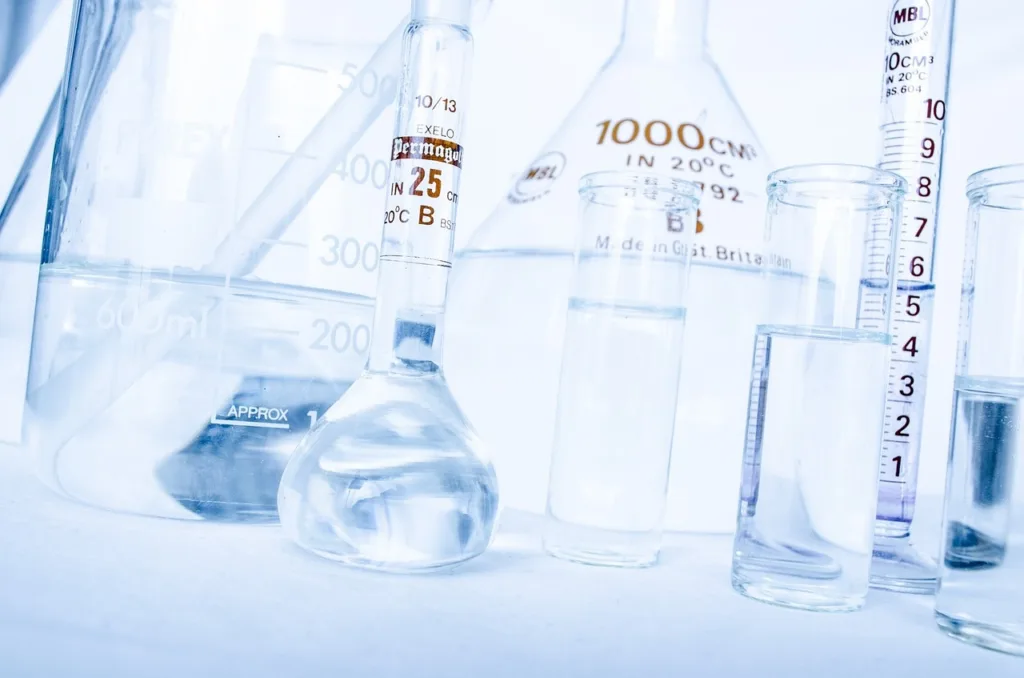In chemistry, percent dissociation is a crucial concept to understand when dealing with weak electrolytes. Weak electrolytes are compounds that partially dissociate into ions in solution. The degree of dissociation is represented by the alpha (α) value, which is the percentage of the ionic compound dissociated or ionized.
The percent dissociation formula is represented as follows: α = (λ_c / λ_0) x 100, where λ_c is the molar conductivity of the weak electrolyte at a particular concentration C, and λ_0 is the molar conductivity of the weak electrolyte at infinite dilution.
The molar conductivity is a measure of the ability of an electrolyte to conduct electrical current in solution. The higher the molar conductivity, the more ions are present in solution, which leads to a higher degree of dissociation.
The percent dissociation formula is essential for determining the strength of weak electrolytes. The higher the percent dissociation, the stronger the weak electrolyte, and the more ions are present in solution. Conversely, the lower the percent dissociation, the weaker the weak electrolyte, and the fewer ions are present in solution.
The percent dissociation formula can be used to calculate the degree of dissociation of any weak electrolyte and is particularly useful in determining the strength of weak acids and bases. For example, acetic acid is a weak acid that partially dissociates into hydrogen ions and acetate ions in solution. Using the percent dissociation formula, we can calculate the degree of dissociation of acetic acid at a particular concentration and determine its strength as a weak acid.
The percent dissociation formula is an essential tool for understanding the strength of weak electrolytes. By calculating the degree of dissociation of a weak electrolyte at a particular concentration, we can determine how many ions are present in solution and the strength of the weak acid or base. Understanding the percent dissociation formula can help chemists make accurate predictions about chemical reactions and design experiments that yield meaningful results.
Is Percent Dissociation The Same As Percent Ionization?
In the context of ionic compounds, percent dissociation and percent ionization are essentially the same thing. Both terms refer to the percentage of the ionic compound that dissociates or ionizes into its constituent ions in solution. Dissociation refers to the separation of the ions in an ionic compound when it is dissolved in a solvent, while ionization specifically refers to the production of ions from a molecule or atom. However, in the case of ionic compounds, dissociation and ionization are ofen used interchangeably as they both involve the separation of ions from the compound. Therefore, percent dissociation and percent ionization represent the same value, which is the percentage of the ionic compound that has undergone ionization or dissociation in solution. It is worth noting that this percentage can be influenced by various factors such as temperature, concentration, and the nature of the solvent.

What Is Degree Of Dissociation Formula?
The degree of dissociation formula can be mathematically represented as follows:
α λ λ α λ λ α = λ c λ 0
Here, α represents the degree of dissociation, which is the fraction of molecules that dissociate into ions in a solution of a weak electrolyte. λ c is the molar conductivity of the weak electrolyte at a given concentration, and λ 0 is the molar conductivity of the weak electrolyte at infinite dilution.
The formula shows that the degree of dissociation is directly proportional to the molar conductivity of the weak electrolyte at the given concentration and inversely proportional to the molar conductivity at infinite dilution. In oher words, the greater the molar conductivity of the weak electrolyte at the given concentration, the greater the degree of dissociation, and the lower the molar conductivity at infinite dilution, the greater the degree of dissociation.
It is important to note that the degree of dissociation formula only applies to weak electrolytes and not strong electrolytes, which dissociate completely in solution.
To summarize, the degree of dissociation formula is a mathematical representation of the relationship between the degree of dissociation, molar conductivity at a given concentration, and molar conductivity at infinite dilution for weak electrolytes.
Conclusion
The percent dissociation formula is a useful tool for calculating the degree to which an ionic compound dissociates into ions in solution. It is represented mathematically as α = λc/λ0, where λc is the molar conductivity of the weak electrolyte at a given concentration (C) and λ0 is the molar conductivity of the weak electrolyte at zero concentration. The percent dissociation or percent ionization is the percentage of the ionic compound that is dissociated or ionized in solution. By using this formula, scientists and researchers can better understand the behavior of weak electrolytes and their solutions, which can have important applications in fields such as chemistry, biochemistry, and medicine. Therefore, the percent dissociation formula is a valuable tool for anone studying or working in these areas.
